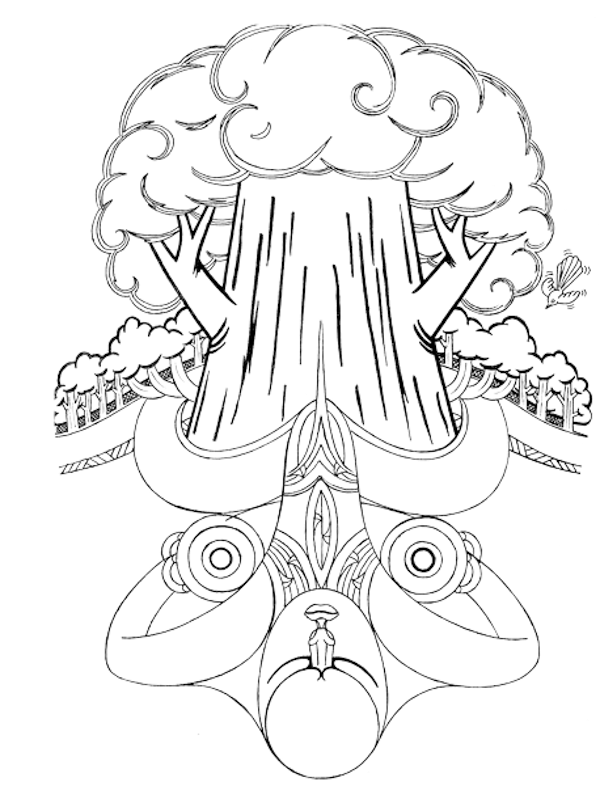
Tānemahuta: the forest and all that dwells in it. Growth, strength, shelter, diversity of life.
Wellington students find ways to support one another in kaitiakitanga
An event in May 2019, hosting renowned primatologist and conservationist Jane Goodall, provided an ideal opportunity for Wellington City students who are passionate about the environment to connect with and support one another.
With the help of Enviroschools, this has flowed on to students from Otari School and Samuel Marsden Collegiate building further connections with each other and their local environment. These kinds of connections are significant for motivating people to take sustainable action for the environment and increasingly important for our young people’s mental and emotional well-being as we become more and more aware of the enormity of the environmental and social challenges facing our world.
Students gather for a day of sharing with Dr Jane Goodall
In May 2019 when Dr Jane Goodall visited Aotearoa, facilitators from Enviroschools Te Upoko o te Ika a Māui teamed up with the organisers from her Roots and Shoots education programme to bring together students engaged in environmental learning and action who might benefit from the opportunity to meet her.
Samuel Marsden Collegiate hosted the day with 100 students from all around the Wellington Region attending, including Wellington High School, Wellington East Girls College, Otari School, Corinna School, Porirua School and Kāpiti College.
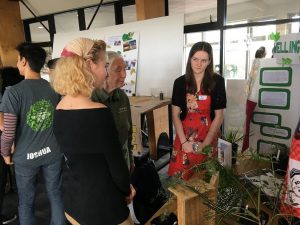
Students share their action projects at the Jane Goodall event.
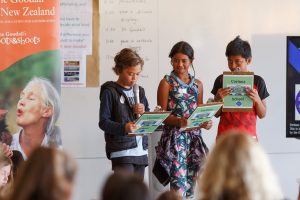
Corinna Students present at the Jane Goodall event.
Dr Goodall’s philosophy on what’s important
When Jane Goodall was growing up during the war in England, people continually feared the disruption of life as they knew it. Perhaps because of this, Jane taught herself to cope with the daily anxiety by pouring love and care into the animals and plants in her life. As a child, she felt strongly, from a very young age, that caring for animals and the land was vital. This led her to challenge the social expectations of young women at that time and took her to Africa where she studied chimpanzees and became a primatologist.
Her ground-breaking research helped shed new light on the relationship between humans and animals. She now has a reputation for scientific rigour and insight, and advocates for a future where people, animals and the environment live in balance.
There are strong links to the Enviroschools’ kaupapa.
“Papatūānuku, earth, whenua, soil, ground – no matter what we call the land, it is our home. It provides us with our kai, our trees and flowers, our medicines, materials to make our homes and goods, and a place to play and have fun – in all these ways we depend on the land for our well-being.” – excerpt from Living Landscapes Theme Area p 4
Sharing the responsibility and the inspiration eases the load
Through her work Dr. Goodall has seen the mounting global crises that we currently face including climate change, environmental degradation, and poverty. Today’s students taking sustainable action can easily get overwhelmed by the enormity of climate science. Climate or eco-anxiety is described by American Psychological Association as “a chronic fear of environmental doom” and as “a fairly recent psychological disorder afflicting an increasing number of individuals who worry about the environmental crisis” by Psychology Today.
Despite this, the eighty five year old holds hope that we will ultimately solve the problems that we have created. Her plea to the students was to observe, connect, love, and nurture.
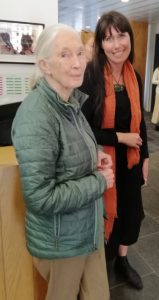
Enviroschools facilitator, Arihia, chats to Jane Goodall at the event.
In her presentation at the Samuel Marsden Collegiate event she spoke very firmly about nurturing this “care for nature” in children in order that they build resilience to cope with changes we face in our environment. She felt it was very important that we protect children’s vulnerable and vast imaginations and focus on cultivating connection, care and love of the natural environment. Dr Goodall’s passion and love was palpable and the students listened with wide eyes.
“Roots creep underground everywhere and make a firm foundation. Shoots seem very weak, but to reach the light, they can break open brick walls. Imagine that the brick walls are all the problems we have inflicted on our planet. Hundreds of thousands of roots and shoots, hundreds of thousands of young people around the world, can break through these walls.” – Dr. Jane Goodall
Students share their own experiences
Many of the students attending presented projects already underway in their schools and communities to Dr Goodall and their peers. From a science garden at Samuel Marsden to fresh water studies at Kāpiti College, Otari Native Bush student guides, Boomerang bags and native seed propagation at Wellington High School, the message was clear – these students wanted to protect and care for their place here in Aotearoa to make a difference.
The chance for many schools to come together like this and share projects is valuable for reinforcing the sense that together they are making a difference. On this they were unanimous.
Inspired by the Jane Goodall event, two schools in particular have taken advantage of the opportunity to build on the value of connecting with others and their local place.
Local schools connect in their natural environment
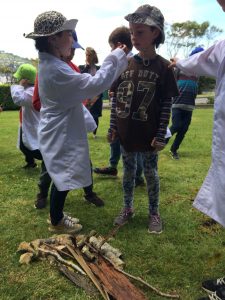
Otari students carry out an experiential activity using natural materials.
In November 2019, thirty students from Otari School and Samuel Marsden Collegiate came together for an afternoon to start a process of exploring shared projects of kaitiakitanga. We know that taking sustainable action happens when people feel connected to their place and want to conserve it.
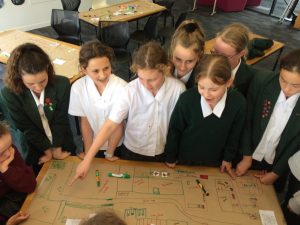
Samuel Marsden students look at the built and natural features map of their place.
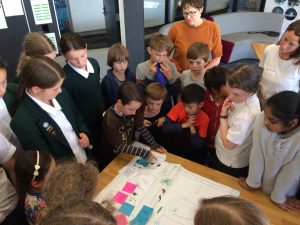
Otari students explain their map and ideas.
They carried out a physical mapping activity based on ‘Mapping my place’ from the Me in My Environment section in the Enviroschools kit. They created an outdoor map that explored the spaces between the two schools using resources/objects found in nature.
‘It was so cool to build the roads with rocks and the forest with fallen leaves, then the wind blew through and all the leaves swirled around us!’’ – student
‘I like seeing how close our schools are and that between them is Zealandia eco-sanctuary and Otari native bush reserve. We’re so lucky, not everyone has Kākā flying around their school, but we do!’ – student
The next steps are for students to continue mapping the current situation within their school environment and gathering ideas from across their schools about possible alternatives. After each school has built their own pool of knowledge and collated ideas for future projects, they will reconnect through a shared project.
Some ideas already put forward are ‘litta traps’ alongside the Kaiwharawhara awa that runs between the schools and a bird count from each school. We watch with anticipation to see how these relationships of schools in a shared community lead to positive action, and how that action supports our students to feel empowered and positive about their future.
